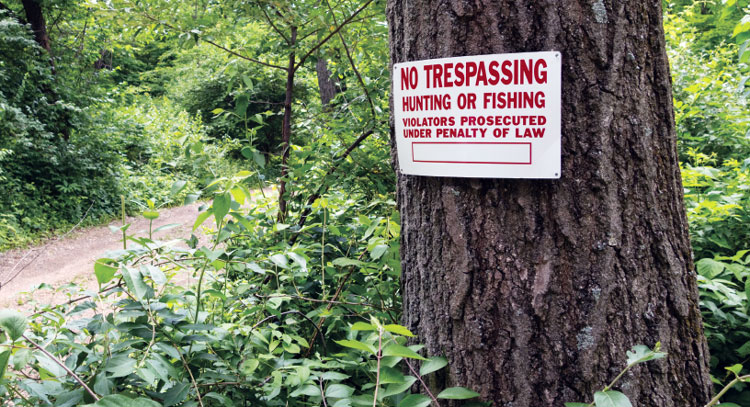
“It comes down to respect.”
That’s what RM of Meadow Lake reeve Harvey Harriott had to say recently about the importance of residential land users gaining the necessary permission from land owners before accessing their property. Harriott’s comment came on the heels the provincial Trespass to Property Amendment Act, 2019, and The Trespass to Property Consequential Amendments Act, 2019 both of which came into force Jan. 1.
“This government has worked hard to balance the rights of landowners in rural Saskatchewan with those of recreational land users,” justice minister and attorney general Gordon Wyant said. “I’m pleased to see the legislation come into force and I want to thank everyone who has worked and consulted with us in its development.”
This legislation clarifies existing laws and ensures consistency in the rules regarding trespassing. Most notably, it moves the onus of responsibility from rural landowners to individuals seeking to access their property. Under the new legislation, those wishing to access a rural landowner’s property for recreational purposes will need to gain consent from the owner. Consent can be provided in writing, electronically online, orally or through signage.
The legislation responds to concerns expressed by rural landowners about individuals who trespass on their property while still giving Saskatchewan people the opportunity to take advantage of our beautiful rural landscapes for outdoor activities such as hunting, fishing, snowmobiling and hiking.
“What I understand is this all came into play and started to get pushed for with the introduction of clubroot, a fairly invasive soil disease that affects canola,” Harriott noted. “The biggest method of transferring clubroot is spores or molecules in dirt. For example, if someone is out hunting, and driving around and getting mud on their tires from, say, John’s field and then drives across the road, for example, and through Bill’s field, he could be moving clubroot. In the oilfield, when it comes to pipelines and drilling, the effort they put into sterilizing and sanitizing everything when moving from one quarter section of land to another is outrageous in terms on the amount of money spent. I believe that is the background from where this started.”
by Phil Ambroziak